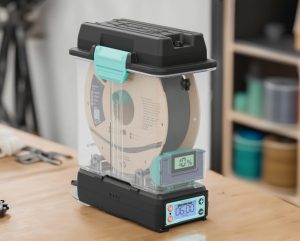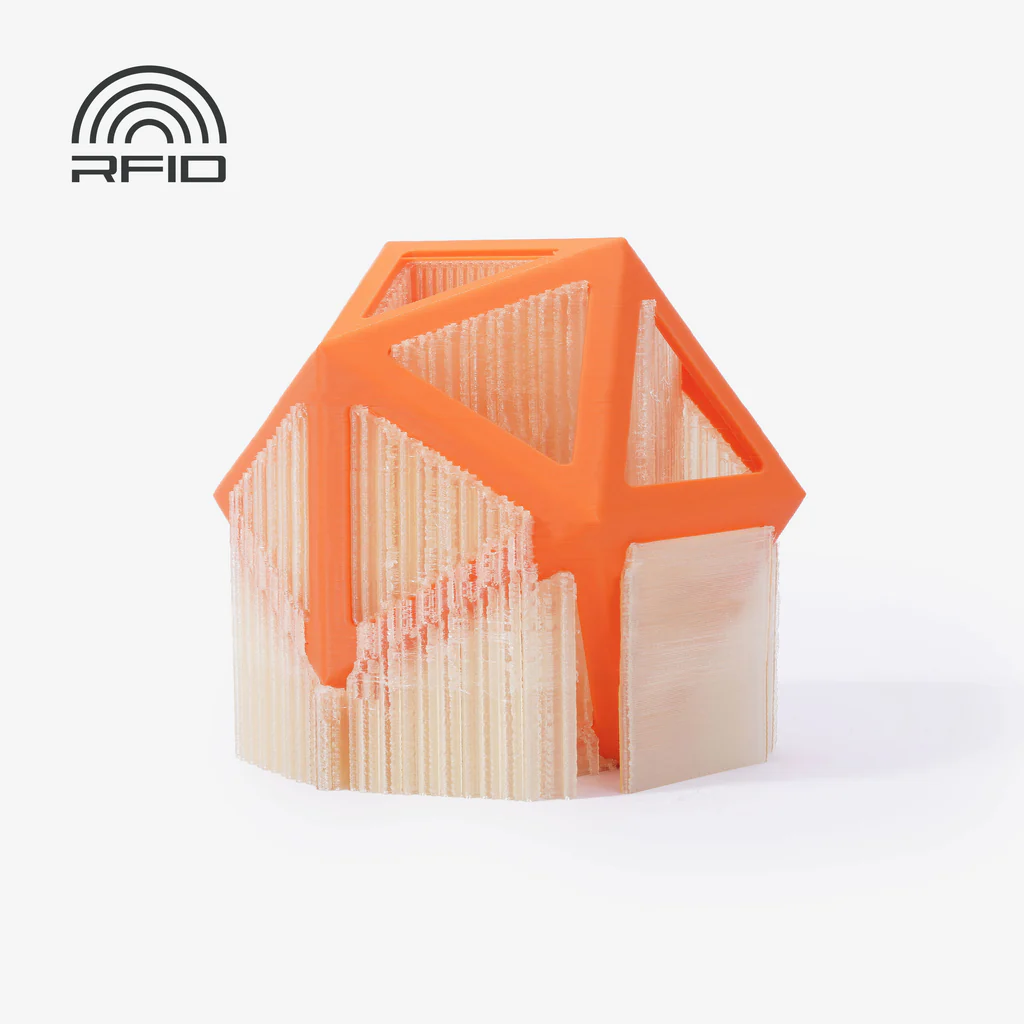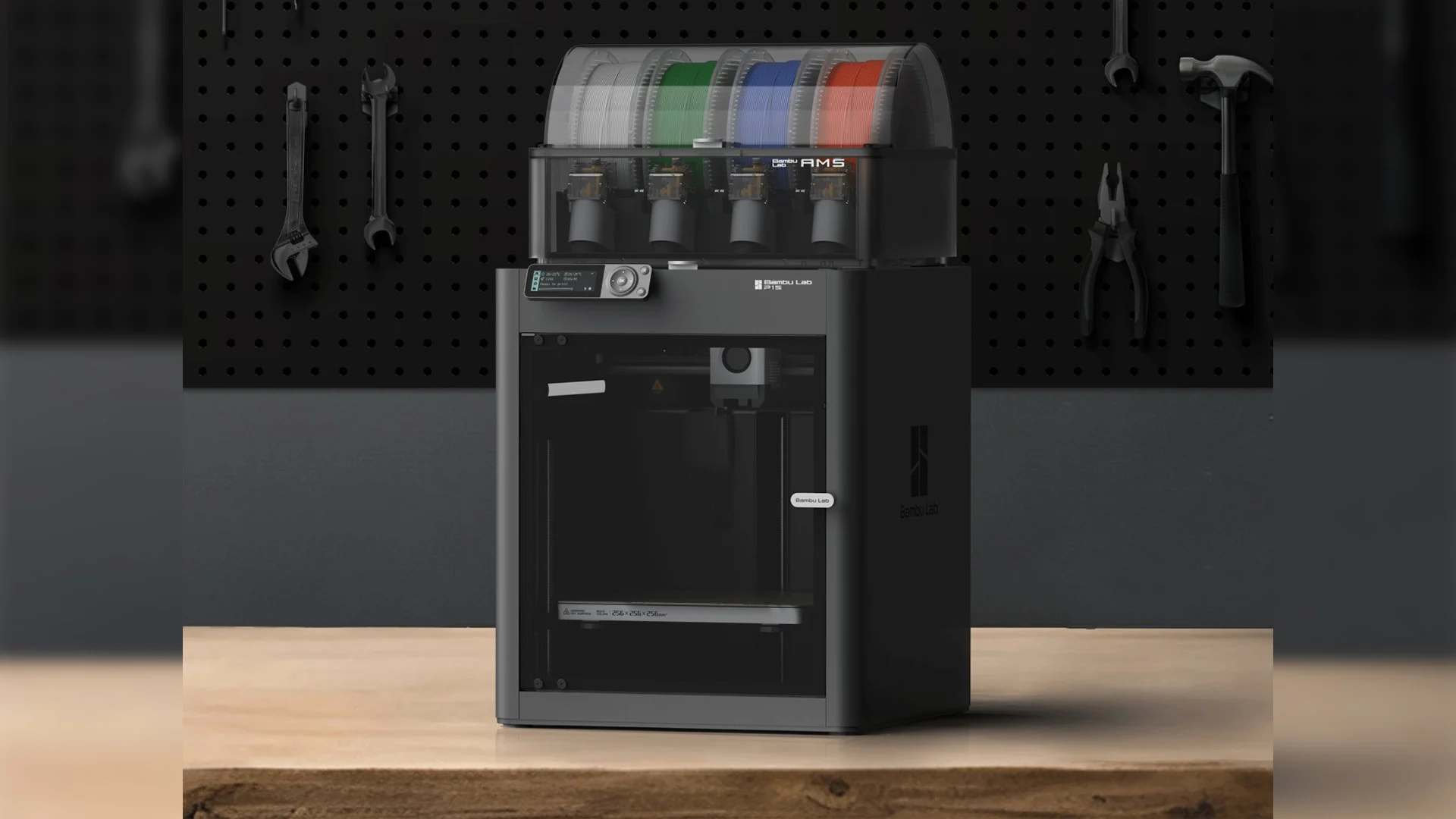Support structures are indispensable when 3D printing intricate models with overhangs, bridges, and complex geometries. However, the post-processing hassles of removing these supports can quickly drain your motivation. Luckily Bambu Lab has the perfect solution: PVA water-soluble support material combined with its innovative Automatic Material System (AMS).
A quick rundown:
- The AMS chambers provide a sealed, low-humidity environment ideal for storing and printing Bambu Lab PVA filament. PVA readily absorbs moisture, which can cause issues like stringing, clogging, etc.
- The printer software guides optimised settings for the best results when printing with Bambu Lab PVA as a soluble support material.
Bambu Lab PVA and AMS
The Bambu Lab Automatic Material System (AMS) is a multi-material holding system that automatically manages and feeds filaments to the X1 and P1 series 3D printers with several functional upgrades over a standard spool holder:
- Multi-material printing with space for four filament spools.
- Humidity control with a sealed chamber and sensors.
- Filament runout detection and automatic switching.
- Automatic material detection through RFID (all Bambu Lab filaments).
Bambu Lab PVA fits into this as the primary soluble support material for builds using PLA, PETG, PLA-CF/GF, and PETG-CF/GF. The AMS system provides the optimal environment to keep the water-soluble PVA stable during printing.
Note that the AMS isn’t compatible with Bambu Lab’s A1 series printers. An airtight external container along with desiccants is recommended with the AMS Lite (not fully sealed) to control moisture levels – the Polymaker Polydryer offers the perfect affordable solution, featuring a modular design, superior sealing and optimised material drying programs, along with the dual function of using its PolyDryer Box as a 3D filament dry box

Dissolving limitations with PVA
The beauty of PVA lies in its solubility. Unlike standard support materials that require hazardous solvents or painstaking removal, it quite literally dissolves away in plain water, making removing supports from delicate parts and hard-to-reach crevices a breeze.

Bambu Lab’s premium PVA formula dissolves cleanly with no residue, penetrating deep into every nook and cranny to free your model comprehensively.
You can print organic, free-flowing shapes and mind-bending internal geometries that were impossible with breakaway supports.
Another standout advantage is PVA’s ability to print supports directly on the model surface with zero spacing between support and part interfaces – seamless bonding that enhances stability and surface quality in overhanging areas.
Foolproof filament management with AMS
PVA can only reach its full potential when kept pristine and dry, and Bambu Lab’s innovative AMS keeps filaments like Bambu Lab PVA in sealed chambers with desiccant and humidity sensors, preventing any moisture exposure.
You’ll never suffer print issues from wet PVA filament again.

The AMS goes beyond environmental control, though. Its intelligent system, powered by sensors and firmware, prevents jams, and catches issues like tangles mid-print—crucial for uninterrupted printing with soluble supports.
With RFID filament detection, inserting PVA spools into the AMS automatically syncs material settings and parameters in Bambu Studio, letting you say goodbye to tedious prep. Trust the AMS to get your PVA dialled in effortlessly.
Mastering PVA: handy hints
- Keep PVA bone dry before use with Bambu Lab’s recommended drying cycles. Moist filaments invite print defects.
- For complex overhangs, use normal dense supports rather than tree supports, which may be susceptible to collapse.
- When dissolving supports post-print, warm water around 40-50°C accelerates dissolving while staying below PLA’s glass transition point.
- For faster PVA removal, you can soak prints briefly before snapping away partially dissolved supports manually rather than waiting for complete dissolution.
Limitless creativity awaits
Bambu Lab’s ingenious AMS keeps materials in perfect condition, and realising your wildest design ideas has never been easier.
The AMS acts like an automated dry box, keeping filaments pristine without manual hassle and making swapping between filaments extremely easy compared to manually unloading/loading on regular printers.
With Bambu Lab PVA and AMS, you can print organic curves, enclosed voids, and extreme overhangs—everything that used to be arduous due to reliance on frustrating breakaway support materials is liberated by water-soluble PVA.
With the quality-of-life benefits AMS adds, like spool flexibility and intelligent detection and monitoring, printing complex parts has never been easier.




